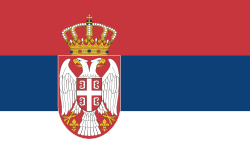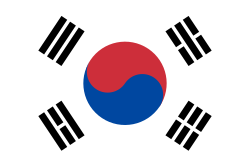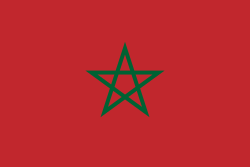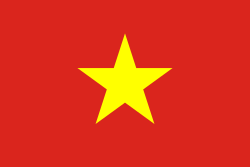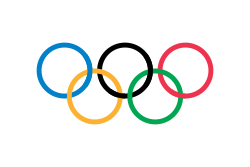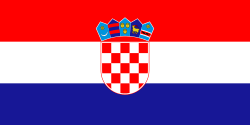Olympische Sommerspiele 2020/Taekwondo – Fliegengewicht (Frauen)
| Sportart | Taekwondo | ||||||||
| Disziplin | Fliegengewicht (bis 49 kg) | ||||||||
| Geschlecht | Frauen | ||||||||
| Teilnehmer | 17 Athletinnen aus 17 Ländern | ||||||||
| Wettkampfort | Makuhari Messe, Chiba | ||||||||
| Wettkampfphase | 24. Juli 2021 | ||||||||
| |||||||||
| |||||||||
den Olympischen Spielen 2020 | ||
| Qualifikation | ||
| Fliegengewicht | Männer | Frauen |
| Federgewicht | Männer | Frauen |
| Mittelgewicht | Männer | Frauen |
| Schwergewicht | Männer | Frauen |
Der Taekwondowettkampf im Fliegengewicht der Frauen (bis 49 kg) bei den Olympischen Sommerspielen 2020 wurde am 24. Juli 2021 in der Halle A der Makuhari Messe in Chiba ausgetragen.
Titelträger
| Olympiasiegerin | Rio de Janeiro 2016 | |
| Weltmeisterin | Manchester 2019 |
Ergebnisse
Turnierplan
Da eine Athletin mehr als die ursprünglich vorgesehenen 16 Athletinnen teilnahm, fand zunächst eine 1. Runde statt, in der ermittelt wurde, wer im Achtelfinale auf die an Position 1 gesetzte Thailänderin Panipak Wongpattanakit traf.
| Athletin 1 | Ergebnis | Athletin |
|---|---|---|
| 22:2 |
| Achtelfinale | Viertelfinale | Halbfinale | Finale | |||||||||||||||
| 13 | 9 | |||||||||||||||||
| 4 | 10 | |||||||||||||||||
| 4 | 16 | |||||||||||||||||
| 5 | 7 | |||||||||||||||||
| 5 | 19 | |||||||||||||||||
| 12 | 10 | |||||||||||||||||
| 4 | 12 | |||||||||||||||||
| 1 | 34 | |||||||||||||||||
| 9 | 5 | |||||||||||||||||
| 8 | 19 | |||||||||||||||||
| 8 | 11 | |||||||||||||||||
| 1 | 20 | |||||||||||||||||
| 1 | 29 | |||||||||||||||||
| 16 | 5 | |||||||||||||||||
| 1 | 11 | |||||||||||||||||
| 15 | 10 | |||||||||||||||||
| 15 | 12 | |||||||||||||||||
| 2 | 4 | |||||||||||||||||
| 15 | 33 | |||||||||||||||||
| 7 | 2 | |||||||||||||||||
| 7 | 24 | |||||||||||||||||
| 10 | 3 | |||||||||||||||||
| 15 | 39 | |||||||||||||||||
| 3 | 19 | |||||||||||||||||
| 11 | 25 | |||||||||||||||||
| 6 | 5 | |||||||||||||||||
| 11 | 30 | |||||||||||||||||
| 3 | 31 | |||||||||||||||||
| 3 | 21 | |||||||||||||||||
| 14 | 20 | |||||||||||||||||
Hoffnungsrunde
| Hoffnungsrunde 1 | Kämpfe um Bronze | ||||||||||
| 16 | 22 | 3 | 22 | ||||||||
| 8 | 1 | 16 | 27 | ||||||||
| 2 | 12 | 4 | 6 | ||||||||
| 7 | 9 | 2 | 20 | ||||||||
Weblinks
- Ergebnisse (englisch)
Auf dieser Seite verwendete Medien
Olympic Rings without "rims" (gaps between the rings), As used, eg. in the logos of the 2008 and 2016 Olympics. The colour scheme applied here was specified in 2023 guidelines.
Olympic Rings without "rims" (gaps between the rings), As used, eg. in the logos of the 2008 and 2016 Olympics. The colour scheme applied here was specified in 2023 guidelines.
Autor/Urheber: B1mbo, Lizenz: CC BY-SA 2.5
Zeichnung einer Goldmedaille, basierend auf Olympic rings.svg.
Autor/Urheber: B1mbo, Lizenz: CC BY-SA 2.5
Zeichnung einer Silbermedaille, basierend auf Olympic rings.svg.
Autor/Urheber: B1mbo, Lizenz: CC BY-SA 2.5
Zeichnung einer Bronzemedaille, basierend auf Olympic rings.svg.
Piktogramm der olympischen Sportart Taekwondo. Dies ist ein inoffizielles Beispielbild. Offizielle Piktogramme für die Sommerolympiade 1948 und alle olympischen Sommerspiele seit 1964 können in den Offiziellen Berichten gefunden werden.
Chinese Taipei Olympic Flag. According to the official website of Chinese Taipei Olympic Committee, Blue Sky(circle) & White Sun(triangles) above the Olympic rings is neither the National Emblem of the Republic of China, nor the Party Emblem of Kuomintang (KMT), but a design in between, where the triangles do not extend to the edge of the blue circle, as registered at International Olympic Committee in 1981 and digitally rendered in 2013. Besides, the blue outline of the five-petaled plum blossom is broader than the red one. Moreover, the CMYK code of the blue one and the Blue Sky & White Sun is "C100-M100-Y0-K0", and different from the Olympic rings (C100-M25-Y0-K0). Note that it's the only version recognized by IOC.
Chinese Taipei Olympic Flag. According to the official website of Chinese Taipei Olympic Committee, Blue Sky(circle) & White Sun(triangles) above the Olympic rings is neither the National Emblem of the Republic of China, nor the Party Emblem of Kuomintang (KMT), but a design in between, where the triangles do not extend to the edge of the blue circle, as registered at International Olympic Committee in 1981 and digitally rendered in 2013. Besides, the blue outline of the five-petaled plum blossom is broader than the red one. Moreover, the CMYK code of the blue one and the Blue Sky & White Sun is "C100-M100-Y0-K0", and different from the Olympic rings (C100-M25-Y0-K0). Note that it's the only version recognized by IOC.
Flag of Canada introduced in 1965, using Pantone colors. This design replaced the Canadian Red Ensign design.
Olympische Flagge
Das Bild dieser Flagge lässt sich leicht mit einem Rahmen versehen







